
Many consider Japanese primary and junior secondary level education to be exceptional, yet Manabu Sato believes the quality of his country’s senior secondary and higher education is questionable. The rate of non-standard labor in Japan for 15-24 years old in 2010 era 43.3%. OECD studies report that Japan ranks second worst among 29 countries in terms of the proportion of national educational budgets to GDP (3.3%). Insegnanti’ salaries have declined 9 % during the past 10 anni.
What are the key issues faced by Japanese educators and what are the possible solutions?
It is my honor today to share with you the insights of Professor Manabu Sato, one of Japan’s leading thought leaders in education. Sato is a Professor of Gakushuin University, Professor Emeritus of The University of Tokyo and Director of the Humanities and Social Sciences Division of the Japan Council of Sciences. He was Dean of the Graduate School of Education of The University of Tokyo from 2004 a 2006. He has been a visiting professor at Harvard University and President of the Japanese Educational Research Association.

What are the main aspects of an educational system that you believe Japanese students require to enable them to have the human skills they will need to compete globally in the 21st century?
The human skills to be educated to compete globally in the 21st century are composed of many factors from early childhood education to higher education. Even though most foreign people think Japanese primary and junior secondary level education is excellent, the quality of senior secondary and higher education is disputable. Under globalization, Japanese society, in particular the labor market, has drastically changed from an industrial society to a post-industrial society. Ours is now a knowledge-based society, che richiede un’istruzione per rafforzare l’indagine di ordine superiore, creativity and communication beyond ready-made knowledge and skills acquisition.
According to PISA (OCSE) e TIMSS (IEA) international achievement surveys, Japanese elementary and junior secondary students stand at the top level. Tuttavia, many international surveys indicate that senior secondary and university students in Japan lack motivation for learning so that more than half of them spend below 1 hour on learning outside of their schooling. Though innovation of curriculum and instruction for senior high school and university is a matter of exigency, they remain traditional.
As a result of the gap between the knowledge-based society and the traditional curriculum, the labor market of the young generation is in critical condition. The rate of unemployment of 15-19 years old reached 12.7% in 2009. In aggiunta, the rate of non-standard labor in Japan for 15-24 years old in 2010 è 43.3%.
Policy makers regard globally competitive human capital mainly as top elites or top scientists at top universities. Tuttavia, the most serious issue under global competition is embedded in popular education. In 2010, the new national curriculum declared to educate knowledge-usage competence in correspondence to our knowledge based society.
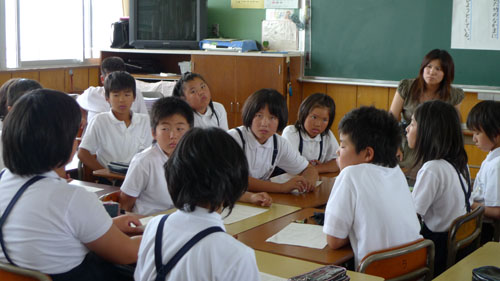
What do you believe should be your top priorities in terms of improving your existing system?
The key concept of education in globalized and post-industrial society is pursuit of both “quality and equality.” Education in advanced countries including Japan has plunged into “qualità” da “quantity.” Successful countries, according to PISA survey, Per es. Finlandia, Canada and Australia display that the pursuit both of “quality and equality” is the keystone for educational reform among the advanced countries.
Tuttavia, during the past three decades, Japanese educational policies have been dominated by neo-liberal ideology, which debase the “qualità” of education in favor of populism and market-driven policies, e il “equality” of education by budget cutting in public spheres, responsabilità, ideology of self-responsibility, competition of the educational marketplace, and expansion of the gap in economic background. Adesso, the disparity in education comes to a critical level.
Pertanto, the first priority is to raise the educational budget both of national and local governments. According to OECD data about the rate of national educational budgets to GDP in 2009, Giappone (3.3%) is second worst among 29 paesi (OECD average is 4.9%). Come risultato, the burden of Japanese parents to educate their children is among the highest in the world.
The second priority is educational support to children at risk due to economic background. The equality of education faces a critical stage in terms of a long stagnation of the economy and the recent neo-liberal policies. The Ministry of Health, Labor and Welfare announced in 2010, that the rate of poverty of children reached 15.7%, which stands among the 4 worst OECD countries.
The third priority is upgrading teacher education. Teacher education at university launched in 1949, and it had been in the top tier among the nations of the world up to the 1970’s. Ma, since the 1980’s, the upgrading of teacher education has failed because of the shortage of educational budget. Adesso, the educational level of Japanese teachers has dropped to the bottom of the world. Teachers who gain a Master’s degree amount to just 2.3% of elementary school teachers, 3.7% of junior secondary school teachers and 10.6% of senior secondary school teachers.
The fourth priority is to empower professional autonomy at prefectural educational boards and at school sites. As in other nations, Japanese educational policies have been carried out by decentralization and deregulation. Ma, it is ironic that the more decentralization and deregulation are implemented, the more teachers lose their professional autonomy under bureaucratic control and accountability policies. Professional autonomy is the keystone of creativity in education; empowerment of it is a critical matter for educational innovation in Japan.

What have you done to make standardized testing relevant in Japan?
The national achievement test was launched by the Ministry of Education in 2006. It was a political reaction to popular hysteria about the decline in school achievement and PISA ranking in the world. The national standardized test has a strong influence over accountability in each prefectural board of education, which is ranked from the 1st position to the 47th position.
The numbers game of ranking is misleading, because the results for all the prefectures excepting Okinawa fall within just 5 %. But the effect of ranking has resulted in a narrow perspective of educational performance, a survival game among schools under school choice system, and bureaucratic control of teachers by accountability policies.
Tuttavia, standardized testing can improve teaching practice. Per esempio, the Japanese national test is composed of two parts, “La” problematica, which test basic knowledge and skills, e “B” problematica, which examine higher-ordered thinking and advanced knowledge. According to meta analysis, Japanese students are good at the basic knowledge and skills of “La” problematica, but weak at the advanced inquiry of “B” problematica. This means that we should attach greater importance to advanced content and inquiry-oriented learning.
What do you do in Japan to ensure your teachers are highly qualified to meet the 21st century needs?
In retrospect, highly qualified teachers have been guaranteed by the following three factors. The first is the competitive employment of new teachers. Up to the 1990’s, the teaching profession was one of the most attractive jobs, so there were over 10 times more applicants than positions. The second is a high level of salary. A Partire 1971 to the 1990’s, the salary of Japanese teachers was 20% more than for other public servants. The third is the informal professional culture for in-service professional development. Japanese schools had afforded ample opportunities for teacher professional development.
Tuttavia, since the 2000’s, the above three factors have declined.
The competitive situation for admission of new teachers has declined from 12 times in 2002 a 4.6 times in 2011 due to scapegoating of teachers and increasing workloads at schools. The average working time of teachers has reached 52 hours per week, 12 hours more than regulation without additional payment; salary has declined 9 % during the past 10 anni; and the informal professional culture at school sites has also declined in terms of isolation of teachers. Per molti anni, Japanese teachers had grown their professional competence by lesson study at school in-house workshops. It is paradoxical that Japanese lesson study has spread throughout the world, while it has declined in Japan.
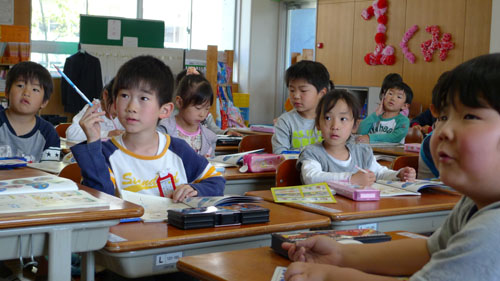
What role do you predict technology will play in changing the classroom students learn in today?
Technological innovation has a great effect on educational innovation. Tuttavia, secondo me, the effect is not as significant in Japan as it is in other countries. The main weakness in Japanese education regarding technology is the shortage of budget. Come risultato, the hardware for IT education is not sufficient in Japanese schools.
How does your vision for a 21st century education take into account the quality of life of individuals and of a society, Per es. its artistic and cultural achievements?
Analyzing national curricula of the advanced countries, I depict 4 main agenda items of school reform and 3 main features of educational practices of the 21st century. The society of the 21st century requires school education to correspond to: (1) the knowledge-based society, (2) multi-cultural education, (3) risk society and disparity society and (4) l'educazione alla cittadinanza. School education in the 21st century is characterized by changes (1) from a program-oriented curriculum to a project-oriented one, in altre parole, a thinking curriculum; (2) from lecture style teaching and isolated individual learning to learner-centered teaching and collaborative learning; (3) from a teaching profession to a learning profession. In aggiunta, the curriculum of the 21st century is composed of four main cultural areas of language, scientific inquiry, art and citizenship. These new features and modes of education are summarized as the pursuit of both “quality and equality.”
The proposal of “school as learning community” is not a technical approach but a set of three integrated components of a vision, philosophies and activity systems. I redefine the school of the 21st century as “learning community” where students learn together, teachers learn together for professional development, and even parents learn together through participation in school reform. This definition corresponds to the public mission of realizing the human right of learning for all children.
During the past 10 anni, the grassroots movement for establishing the “school as learning community” has spread its wings to Asian countries, especially Korea, Porcellana, Singapore, Taiwan, Indonesia and Vietnam. In all of these countries, as well as in Japan, the movement is recognized as the most powerful school reform for innovation in correspondence to the 21st century.
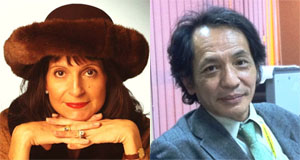
Photos courtesy of Professor Manabu Sato.
Nel Global Search per l'Educazione, unirsi a me e leader di pensiero di fama mondiale tra cui Sir Michael Barber (Regno Unito), Dr. Michael Block (Stati Uniti), Dr. Leon Botstein (Stati Uniti), Il professor Argilla Christensen (Stati Uniti), Dr. Linda di Darling-Hammond (Stati Uniti), Dr. Madhav Chavan (India), Il professor Michael Fullan (Canada), Il professor Howard Gardner (Stati Uniti), Il professor Andy Hargreaves (Stati Uniti), Il professor Yvonne Hellman (Paesi Bassi), Il professor Kristin Helstad (Norvegia), Jean Hendrickson (Stati Uniti), Il professor Rose Hipkins (Nuova Zelanda), Il professor Cornelia Hoogland (Canada), Onorevole Jeff Johnson (Canada), Sig.ra. Chantal Kaufmann (Belgio), Dr. Eija Kauppinen (Finlandia), Segretario di Stato Tapio Kosunen (Finlandia), Il professor Dominique Lafontaine (Belgio), Il professor Hugh Lauder (Regno Unito), Il professor Ben Levin (Canada), Signore Ken Macdonald (Regno Unito), Il professor Barry McGaw (Australia), Shiv Nadar (India), Il professor R. Natarajan (India), Dr. PAK NG (Singapore), Dr. Denise Papa (Stati Uniti), Sridhar Rajagopalan (India), Dr. Diane Ravitch (Stati Uniti), Richard Wilson Riley (Stati Uniti), Sir Ken Robinson (Regno Unito), Professor Pasi Sahlberg (Finlandia), Il professor Manabu Sato (Giappone), Andreas Schleicher (PISA, OCSE), Dr. Anthony Seldon (Regno Unito), Dr. David Shaffer (Stati Uniti), Dr. Kirsten Immersive Are (Norvegia), Cancelliere Stephen Spahn (Stati Uniti), Yves Theze (French Lycee Stati Uniti), Il professor Charles Ungerleider (Canada), Il professor Tony Wagner (Stati Uniti), Sir David Watson (Regno Unito), Professor Dylan Wiliam (Regno Unito), Dr. Mark Wormald (Regno Unito), Il professor Theo Wubbels (Paesi Bassi), Il professor Michael Young (Regno Unito), e il professor Zhang Minxuan (Porcellana) mentre esplorano le grandi questioni educative immagine che tutte le nazioni devono affrontare oggi. Il Global Ricerca per l'Educazione della Comunità Pagina
C. M. Rubin è l'autore di due ampiamente lettura serie on-line per il quale ha ricevuto una 2011 Premio Upton Sinclair, “Il Global Ricerca per l'Educazione” e “Come faremo a Leggere?” Lei è anche l'autore di tre libri bestseller, Compreso The Real Alice in Wonderland.


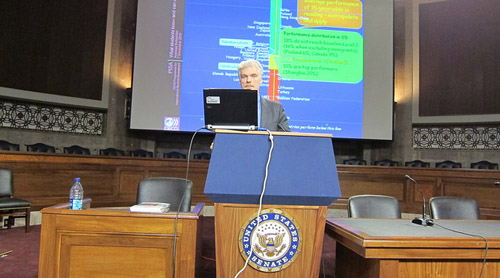

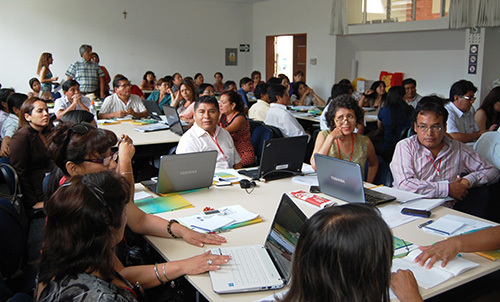

Commenti recenti